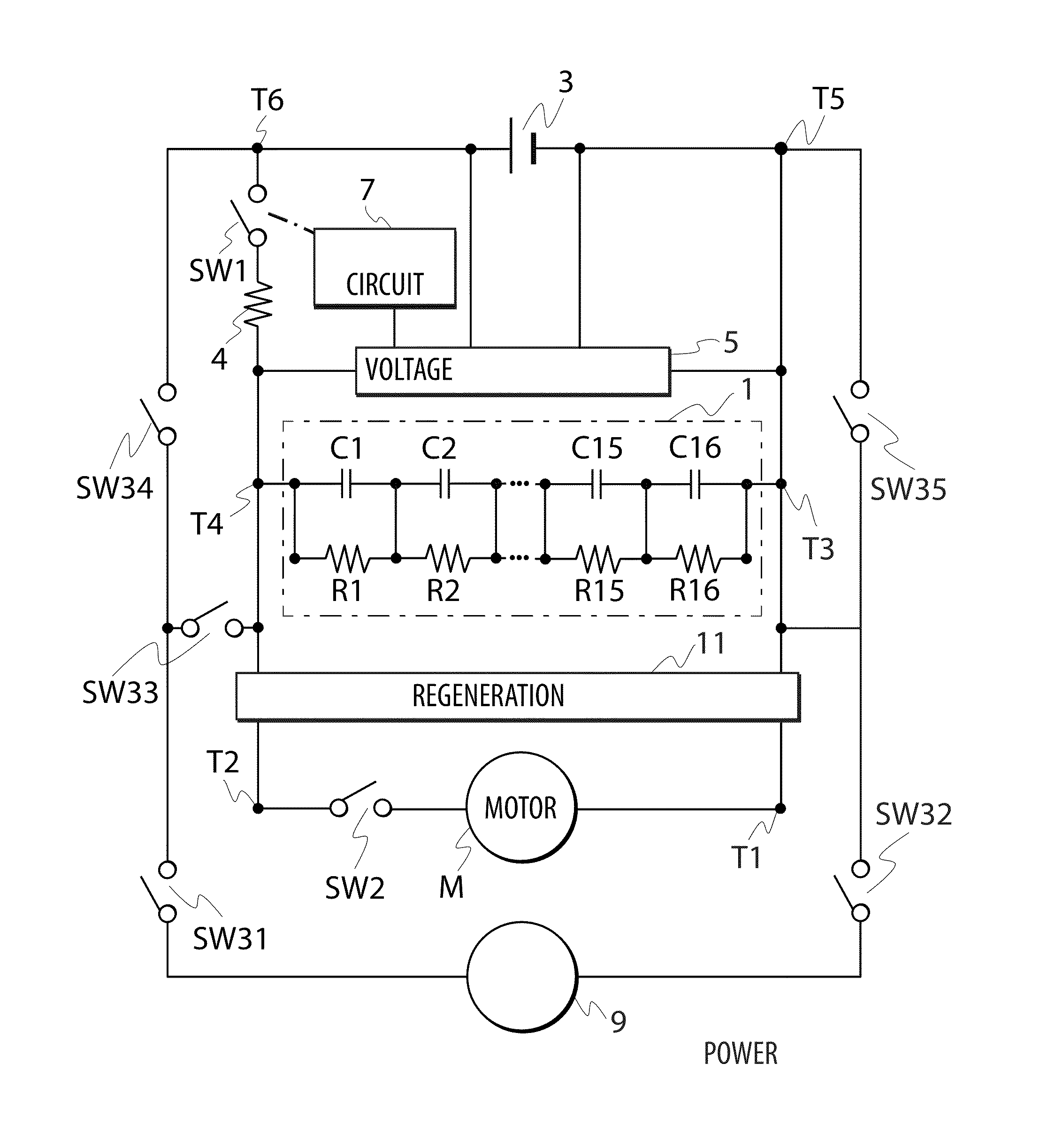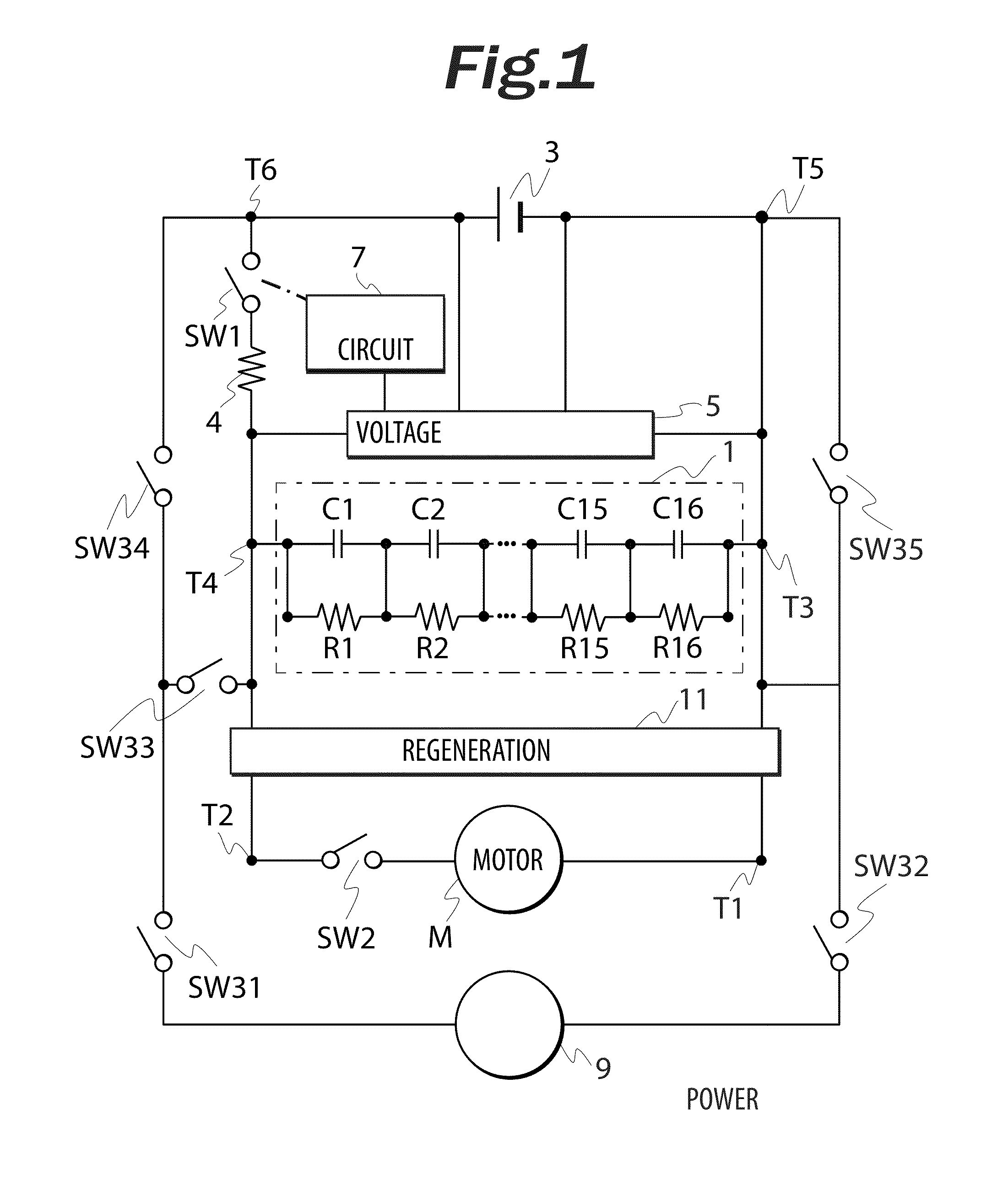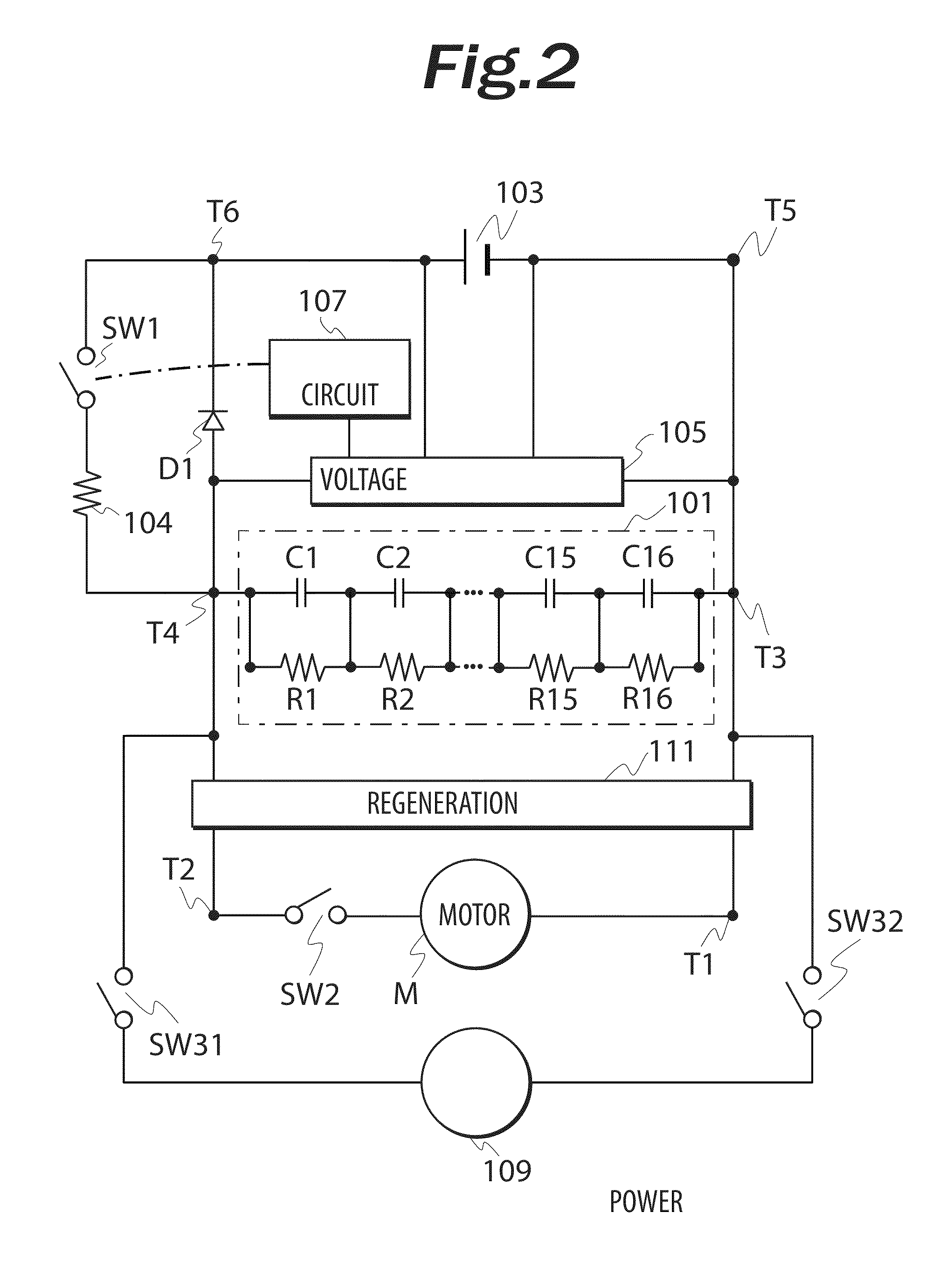Direct-Current Power Source Apparatus
a power source and direct-current technology, applied in the direction of emergency power supply arrangements, electric devices, machines/engines, etc., can solve the problems of secondary battery deformation, difficulty in fully utilizing lithium-ion capacitors in conventional direct-current power source apparatuses, and loss of original characteristics of lithium-ion capacitors, so as to prevent secondary battery degradation, reduce capacitance, and minimize electric power loss
- Summary
- Abstract
- Description
- Claims
- Application Information
AI Technical Summary
Benefits of technology
Problems solved by technology
Method used
Image
Examples
first embodiment
[0044]FIG. 1 is a circuit diagram showing the configuration of a direct-current power source apparatus according to a first embodiment of the present invention applied to an automated guided vehicle. The direct-current power source apparatus according to the embodiment includes a lithium-ion capacitor unit 1, a secondary battery 3 such as a lead-acid battery, a voltage detecting section 5, a control circuit 7, and a switching circuit SW1. The lithium-ion capacitor unit 1 and the secondary battery 3 are connected in parallel with a motor M serving as a load. A power switch SW2 that turns on during an operation is connected in series with the motor M. Specifically, one (input / output portion T3) of paired input / output portions (T3 and T4) of the lithium-ion capacitor unit 1, which is connected to one (input / output portion T1) of paired input / output portions T1 and T2 of the motor M, and one (input / output portion T5) of paired input / output portions (T5 and T6) of the secondary battery 3...
second embodiment
[0050]If a secondary battery, which can be charged in a short time, is used as the secondary battery in the direct-current power source apparatus, it is conceivable to contrive to charge the secondary battery along with charging a lithium-ion capacitor unit. FIG. 2 is a circuit diagram showing the configuration of a direct-current power source apparatus according to a second embodiment in which a diode D1 is disposed in parallel with the switching circuit SW1. In FIG. 2, component parts that are the same as those in the embodiment shown in FIG. 1 are denoted by reference numerals obtained by adding 100 to the reference numerals affixed to their counterparts in FIG. 1 to omit their descriptions. Specifically, the diode D1 has an anode connected to the input / output portion T4 of a lithium-ion capacitor unit 101 and a cathode connected to the input / output portion T6 as a positive terminal of a secondary battery 103. A current from the secondary battery 103 is blocked by the diode D1 wh...
third embodiment
[0051]In the embodiments described above, the switching circuit SW1 is used as the changeover circuit. However, the configuration of the changeover circuit which connects the secondary battery in parallel with the lithium-ion capacitor unit after the voltage of the lithium-ion capacitor unit has decreased is not limited to the switching circuit SW1. FIG. 3 is a circuit diagram showing the configuration of a direct-current power source apparatus according to a third embodiment of the present invention. The embodiment uses a unidirectional conductive device as the voltage detecting section and the changeover circuit. In FIG. 3, component parts that are the same as those in the embodiment shown in FIG. 1 are denoted by reference numerals obtained by adding 200 to the reference numerals affixed to their counterparts in FIG. 1 to omit their descriptions. In the embodiment, a Zener diode ZD1 is used as a unidirectional conductive device which serves as the voltage detecting section and th...
PUM
 Login to View More
Login to View More Abstract
Description
Claims
Application Information
 Login to View More
Login to View More - R&D
- Intellectual Property
- Life Sciences
- Materials
- Tech Scout
- Unparalleled Data Quality
- Higher Quality Content
- 60% Fewer Hallucinations
Browse by: Latest US Patents, China's latest patents, Technical Efficacy Thesaurus, Application Domain, Technology Topic, Popular Technical Reports.
© 2025 PatSnap. All rights reserved.Legal|Privacy policy|Modern Slavery Act Transparency Statement|Sitemap|About US| Contact US: help@patsnap.com



